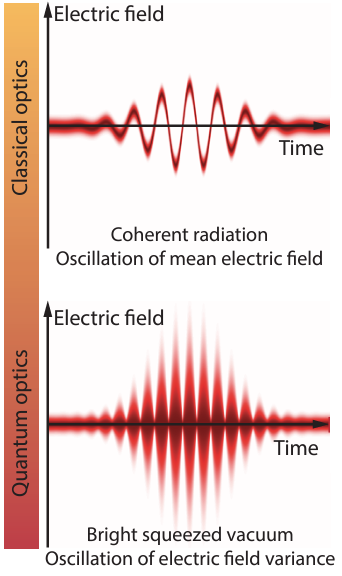Squeezed vacuum drives extreme nonlinear optics

Image courtesy: Andrei Rasputnyi
High harmonic generation (HHG) and attosecond science, the subjects of 2023’s Nobel Prize in Physics, focus on using intense driving laser fields to generate bright, coherent, attosecond light pulses in the extreme ultraviolet (XUV). Virtually no attention has been paid to the quantum properties of the underlying light-matter interactions. A reason is for this disconnection is that the field of quantum optics, which treats and applies the quantum properties of light, is commonly associated with small photon numbers. However, the inception of bright intense sources of quantum light, spearheaded by the lab of Prof. Maria Chekhova (Max Planck Institute for the Science of Light, Erlangen, Germany), and recent theory works from the Technion as well as other worldwide efforts are beginning to cause a paradigm shift by building a bridge between strong-field science and quantum optics.
Now writing in Nature Physics, the groups of Maria Chekhova and Francesco Tani together with our group and other Technion scientists as well as collaborator Denis Seletskiy (Polytechnique Montréal) have shown experimentally and theoretically that bright squeezed vacuum (BSV) can drive HHG in a solid. BSV is a quantum state of light where the average electric field is zero, but the electric field fluctuations are huge and oscillate at the optical frequency. The photon statistics of BSV covers zero to 1013 photons per pulse. In our work, we show that BSV can possess sufficient intensity to drive non-perturbative HHG. We find that the efficiency of HHG is enhanced by up to one order of magnitude when driven by BSV compared to classical (coherent-state) laser pulses. The photon statistics of BSV are strongly imprinted on the harmonic light. BSV has the potential to reveal electron-hole dynamics at much higher intensities than classical laser light. The Technion contribution, led by our postdoc Zhaopin Chen, is the highly challenging theory modeling of the experimental observations, taking into account the photon statistics of BSV and the light-driven electron-hole dynamics in the generation medium.


